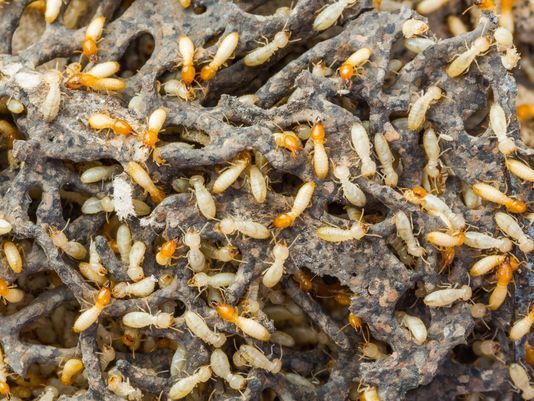The fact that termite colonies create and dwell within nests is not necessarily common knowledge. There exists many insect species that do not build shelters of any sort. However, social insects, such as bees, ants, and termites, are largely recognized for their intricate nesting structures. There are several solitary bee and wasp species that do not live within communal nests, but for the most part, social insects are recognized as competent nest builders. Some termite species are capable of building tall nesting structures that are commonly referred to as “mounds”. The existence of termite mounds is not news to many people, but Americans may be less familiar with these mounds than other people in the world due to the fact that no mound-building termites dwell within the United States. Termite mounds are a common sight in Africa, as this continent is home to the largest number of termite species. Mound-building termites belong to a group of highly evolved termites that are often referred to as “higher termites”. Termite mounds are notable for their tremendous height and complicated structural designs.
There are several different types of termite mounds, but lenticular and cathedral mounds are the most common categories. Unlike cathedral mounds, lenticular mounds are situated partly below the ground’s surface. Lenticular mounds are dome shaped, but cathedral mounds are built in such a way that they resemble tall towers or castles, which is why these mounds are aptly named “cathedral mounds”.
Scientists in India have recently carried out studies that compare lenticular mounds with cathedral mounds. Both of these mounds coexist within the same regions of India. These regions include forests and highway margins. Since cathedral mounds are far more majestic looking than lenticular mounds, scientists have traditionally studied the former far more frequently than the latter. The recent Indian study pointed out that our knowledge of termite ecology may be incomplete due to the academic bias that favors scientific inquiry into cathedral mounds. As it turns out, soil that is aerated during lenticular mound construction becomes more fertile than soil that surrounds cathedral mounds.
Have you ever spotted a termite mound while visiting another country?

